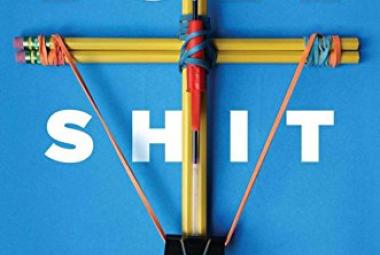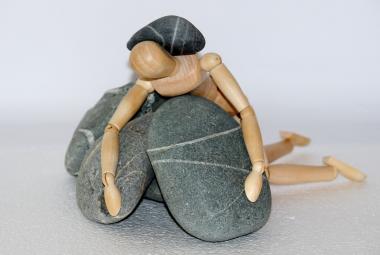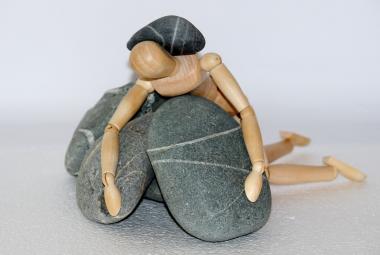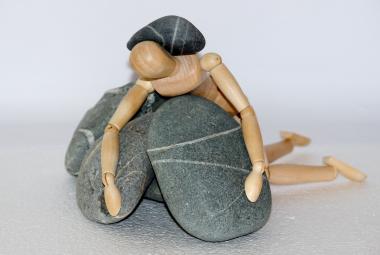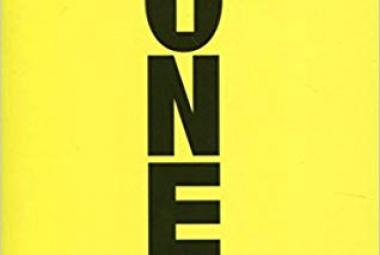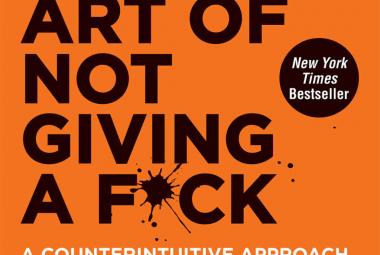In his book Getting things done, David Allen describes a system which helps to achieve a life with ´mind like water´, which is the secret of productivity. When something is thrown into a glass of water, the water wrinkles, but in the end, the water finds its peace back. This is how our mind should react as well. Whenever our thoughts are triggered by an external event and starts wrinkling, it should have time to find back the balance.
In today’s worlds however, people are occupied more and more with everything that they have or want to do, which keeps their mind wrinkled continuously. These people do not have a mind like water.
In this book, Allen describes a system which helps people getting back their mind like water. His system is based on two principles: defining the next executable action for every theme and log your actions in a system which can be trusted. The system itself contains 5 steps: collecting, processing, organizing, reviewing and doing.
Having A TRUSTABLE SYSTEM, in which all your personal actions are stored, brings peace to your mind. When you know you can rely on your system, your subconscious will let go of the action and you can relax as soon as the action is documented. This explains why all list-theories work, whether they are action lists at work, or writing stuff down before you go to sleep.
Having a relaxed mind also means that you can focus on the one specific task at hand, without having your subconscious disruption your strain of thought, which increases your personal productivity.
“If you mind is empty, it is ready and open for anything”
-Shunryu Suzuki
The first step of Allen´s system is COLLECTING. Before you start doing anything, you have to get an overview of everything that needs to be done, both physically as well as mentally. This can include having a physical box in which you put stuff that needs to be handled in some way, or post-it´s on which tasks are written down.
It is important not to start executing the tasks at hand yet, because until you feel comfortable in having collected everything, you won´t have a mind like water to perform the task in the most productive way.
PROCESSING means emptying the box or drawer and defining the next executable action for all items you´ve collected in the first step. Most people find it difficult to act on a specific task because they do not know what it is that they need to do next. Without defining what it is what needs to be done, the chore is nothing more but an abstract idea and will keep popping up in your thoughts.
The next executable step is a clearly described action which you can perform to finish a chore. This means actually doing all the thinking in advance and leaving only the execution. For example, you do not write down ´buying groceries for diner´ on your grocery list, but: ´ingredients for pasta Bolognese´, or even a list of the actual ingredients. Most of the ´work´ is now already finished even though you have not even gone to the store yet.
Step number three is ORGANIZING THE ACTIONS. Again, we only start this step when the processing part is done for all actions. Organizing is done according to Allen´s do it, delegate it, or defer it principle.
When a task takes less than 2 minutes to execute, do it immediately. These are the tasks for which tracking the task takes more capacity than performing it. Delegating should be done when you feel another person could do the task faster and or better than you. All chores that are left should be organized in a system.
The system can include different types of lists. People to call, people to write an E-mail, list of actions for different projects where you are working on. Tasks that are time bound should be planned in your calendar immediately.
REVIEWING is necessary to keep your mind like water, a regular confirmation that your system is still working. In this step, you regularly confirm that you have defined the right tasks and that you have included everything that needs to be done. This reviewing phase should take about 1 or 2 minutes for a daily review and next to those reviews about 10 minutes for a weekly review.
The final step is EXCECUTION and includes the logic in which you decide what tasks to work on at any given time during the day. Which task to work on in any moment in time is based on context, available time, energy level and priority.
the context already defines what kind of tasks you can work on. Sitting behind your desk, makes it possible to make phone calls and write E-mails, are you on the road with some time to spare, then you might use the time to buy something.
Available time is also important. When you have 5 minutes between two meetings, it is not wise to start a task that takes one hour, but answering E-mail might be possible. This is why I do not start with E-mails at the beginning of the day. Most of my mails-chores can be done in smaller time slots throughout the day.
The level of energy should also be taken into consideration. Not all tasks can be done at any time of the day because they require extra focus. I personally like to plan the highly focus tasks early in the morning and keep the simple tasks for the end of the day.
Finally, the priority of tasks can help you define what to do first. The priority should derive from 6 levels of work: life goals (1), your 3-5 year vision (2), your 1-2 year vision (3), current responsibilities (4), current projects (5) and current defined actions (6). The most important actions in the 6th level are the ones that directly influence the other 5 levels.
The five steps Getting Things Done method is relatively easy, but has a big impact on people’s productivity or even better; people’s perception on their own productivity. Continuously defining what the next actions are facilitates a change in the way we think: from passively thinking of something to help you remember, to actively thinking about something. Acting on the right priorities will increase satisfaction even when you have not finished all the tasks that you defined for yourself, because you know you have spent your time wisely.
These and other insights make Getting things done a very interesting read.
Continue to
Nonviolent Communication – M.Rosenberg (summary)
REFERENCE:
Allen, D., 2001, Getting Things Done, the Art of Stress-free Productivity, London: Penguin Books (order this book)






